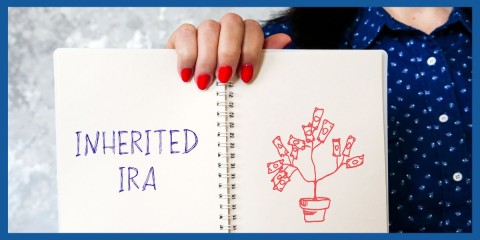What Should You do with Your Old 403(b) Account?
This post was last updated on January 15, 2021, to reflect all updated information and best serve your needs.
A question that comes up regularly is what to do with old retirement accounts. In the old days, many workers stayed at the same employer their entire career and retired with 30 to 40 years of service.
Nowadays, people are more likely to switch jobs every few years, bringing up the question of what to do with old retirement accounts such as 403(b) plans, (and some may even ask what is a 403b?). According to a survey by staffing firm Robert Half, 64 percent of workers favor job-hopping.
The result of this movement between employers is trying to decide what to do with old retirement accounts. If you find yourself in a similar position, you could do one of the following:
- Roll over the account balance directly into your new employer’s retirement plan, provided they have one and provided their plan accepts these types of rollovers.
- Leave your retirement account with your current account administrator (this option is usually available if your balance is above a certain level, generally $5,000)
- Rollover your retirement account into a traditional IRA
- Take a cash distribution - not recommended because of the taxes and penalties that you would have to pay
We’ll go more in-depth about some of the options above, but first, let’s discuss what a 403(b) is.
What Is A 403(B) Account?
Before we get into the different options for your 403(b) plan, let’s go over precisely what one is so you have a better idea if this is the type of account you have. Basically, it’s a retirement plan for employees of certain public school districts, hospitals, tax-exempt organizations, and some ministries.
In many cases, a 403(b) plan is also referred to as a tax-sheltered annuity (TSA) plan. That’s because when these types of accounts were first created, they mainly consisted of TSAs. Nowadays, you’ll find more diversity of investments within 403(b) plans.
These accounts can usually be set up differently depending on where they are offered and the plan administrator's selections. However, 403(b) plans are treated similarly to employer-sponsored 401(k) plans.
They are both funded using pre-tax dollars, which allows the money to grow tax-free until retirement. They have the same annual maximum contribution limit - $19,500 for 2021 for those age 50 and younger. If you’re older than 50, you can also make a catch-up contribution of an additional $6,500. Note that some 403(b) plans offer a Roth option as well.
Since contributions to a traditional 403(b) account are made on a pre-tax basis, they lower your taxable income. Also, your money will continue to grow tax-free until you reach retirement age.
If you don’t withdraw the funds at that point, the money will continue to grow as long as it remains invested. However, you will have to pay income taxes on distributions when you take them out. However, Roth 403(b) accounts can be withdrawn tax-free if certain conditions are met.
What To Do With Your 403(B) Account
If you do find yourself with an old 403(b) account as you change jobs, you may be wondering what your options are. For the most part, you can treat your 403(b) plan the same way you would a 401(k).
There are several options for what you can do with the account. Each one has its own advantages and disadvantages, so pick the one that makes the most sense for you.
Below are the three most common choices when it comes to your old 403(b).
Roll It Into Your New Employer’s Retirement Plan
Provided your new job offers an employer-sponsored retirement account, you can just roll over your old 403(b) into a new retirement account if the new employer’s plan accepts this type of rollover. The retirement plan administrator at your new position can help you with this process.
Before rolling it over to your new employer’s retirement plan, make sure to look at the internal expenses and the investment options available. You’re looking for low expenses with good investment options.
If the plan’s investment options aren’t good and if the plan’s expenses are high, don’t worry because we go over two other options of what you can do with your old 403(b).
One of the advantages of rolling over your old 403(b) into your new employer’s plan, if it meets the criteria above, is having all retirement accounts in one place. As you change jobs, if you can continue to roll over the funds into one central retirement account, it may be easier to keep on top of your investments.
This also means that when you start contributing to the retirement plan offered by your new employer, everything will be together under one login. Depending on how often you switch positions, this can be very helpful for staying organized. Having too many old retirement accounts out there often leads to neglect or even forgetting about them altogether.
Keep Your Old 403(B)
Depending on the balance in your old 403(b) account, you may have the option to keep it with your previous employer. While you won’t be able to contribute any more to that account, it will continue to grow as long as it’s invested.
Since you know the account well and the investment options available, this could be a good move. Make sure your money is invested in a highly diversified mix of funds and, again, with low expenses.
Keeping your old account also gives you the time and flexibility to decide what you want to do with it. A 403(b) account has better creditor protection than an IRA, so that’s something to consider before making a decision as well. If you practice in a high-risk field where you may be subjected to lawsuits, this is an important consideration.
In most cases, it makes sense to pursue different investment options rather than keeping your 403(b) as is. Many employer-sponsored investment options are limited and, a lot of times, have higher fees. This is very common in the 403(b) arena.
Making a switch to an IRA (see below) will most likely provide you with more choices that are often lower cost than the options in your 403(b) plan.
Roll It Into An IRA
Since a 403(b) allows you to defer taxes on your investments until retirement (or withdraw tax-free in the case of a Roth account), rolling it into an IRA account will let you keep that perk. If you already have a traditional or Roth IRA, this means you can combine the funds, so it’s easier to keep track of them.
IRAs are independent investment accounts not affiliated with your employer. As such, you have more flexibility in where you open your IRA and what funds and fees you pay on your investments. At NextGen Wealth, we utilize Charles Schwab as our custodian for our clients, but there are plenty of good ones out there.
Just like with contributions to a 403(b) account, the money within an IRA is sheltered from taxes, and contributions can be deducted from your taxes as long as you qualify.
Taxes and income limitations on IRA contributions do not apply to rollovers. Generally speaking, IRAs offer more investment options than 403(b) accounts. You can invest your money in mutual funds, index funds, and even individual stocks.
Another thing to keep in mind if you’re considering an IRA is the associated expenses. Unlike employer-sponsored plans, IRAs can charge transaction costs and, of course, there are underlying expenses in the mutual funds or ETFs you choose.
Your retirement savings held in an IRA will also not be protected if you ever file for bankruptcy or get sued. The Employee Retirement Income Security Act does have a provision for protecting some of the money in IRA assets from bankruptcy claims. However, there are no safeguards in place in the case of a lawsuit.
How To Do A 403(B) Rollover
If you’re ready to do a rollover into a new account, there are a few things to consider. First, make sure you do a direct rollover of the funds so you can avoid the 20 percent federal income tax withholding. In order to do this, you will just need to call your 403(b) provider to request a rollover.
There are many financial institutions that offer IRA accounts, so do your research to find one that fits your needs and provides the types of funds you want with low fees. Again, at NextGen Wealth, we use Charles Schwab but there are plenty of good ones out there like Fidelity, TD Ameritrade and Vanguard.
Check with the specific financial institution on their policies for doing a rollover before starting the transaction. This will help you avoid delays in processing. Usually, you’ll just have to have an IRA account open to get the funds rolled over.
Talk to the plan administrator of your 403(b) account on what paperwork you need to complete when rolling over the funds into an IRA account. A traditional 403(b) must be rolled over to a traditional IRA account, a Roth 403(b) must be rolled over to a Roth IRA account. If after doing the rollover you decide to convert the money rolled to a traditional IRA to a Roth IRA, that is a separate transaction.
Some plan administrators will ask for a completed distribution request before doing the rollover. Others will also need a letter of acceptance from the IRA trustee/financial institution.
This paperwork aims to prevent fraud and show that you’re rolling over the money into a legitimate retirement plan account.
The Bottom Line
There are many different options for your old 403(b) account. It’s important to consider all of your options before you decide how you want to move forward. Keep in mind that as you switch jobs, you’ll need to figure out the best way to deal with retirement plan funds.
Overall, the fewer accounts and funds you have, the simpler your life will be. That way, you don’t have to keep track of all of them and check multiple financial institutions to manage all of your accounts.
It’s always a good move to consult with a trusted financial advisor who can help walk you through your options and the process. This will allow you to consider different options and ask questions before making a final decision. The more information you get before deciding what to do with your old 403(b) account, the better.


